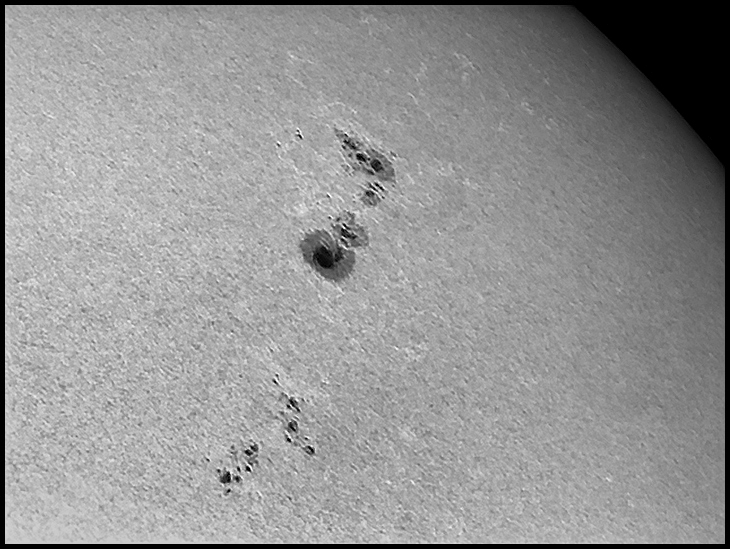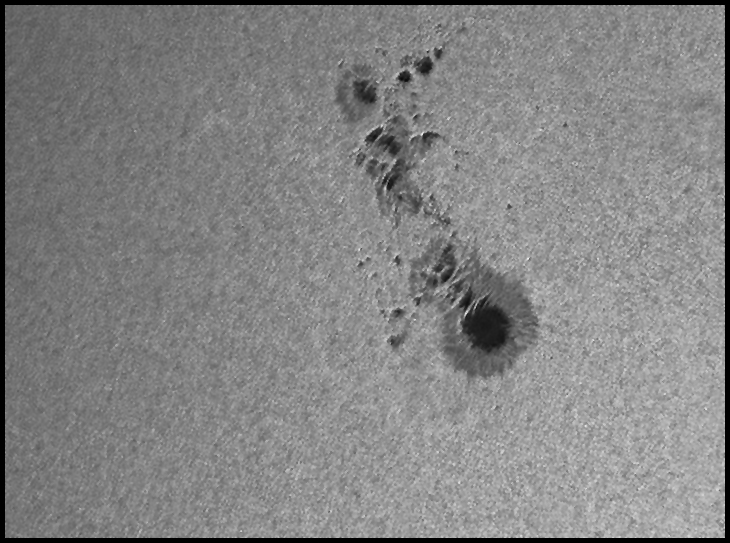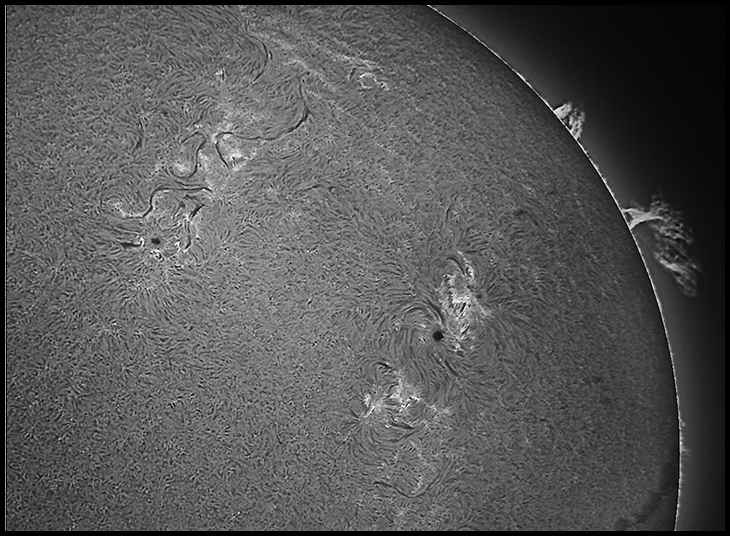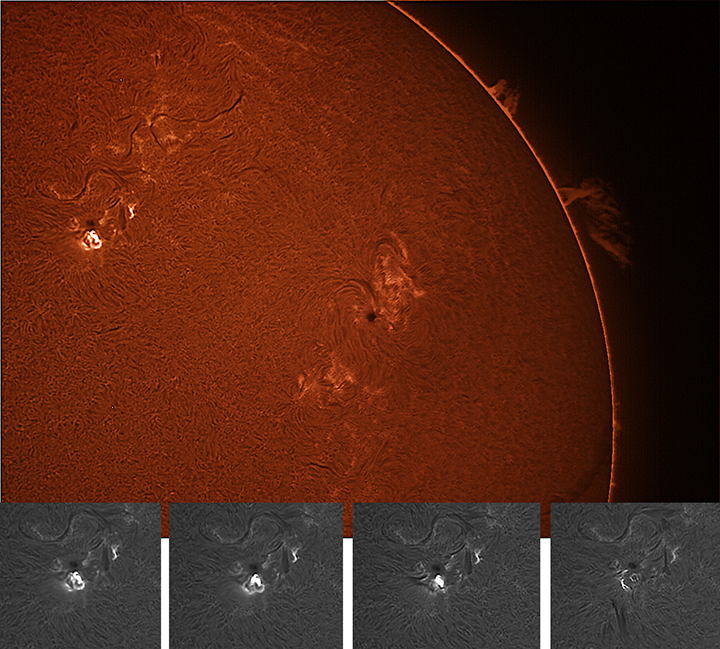|
The top frame is my first solar image with the AT10RC. I added a full-aperture Baader "AstroSolar" foil filter from AstroZap to the kit (the size sold for the Meade SN10 fits the AT10RC nicely): best 40% of 400 frames, 1.3ms, 6db, gamma=1.00. I used the continuum filter, too. My first attempt was with the snout-mounted Barlow, but the image scale was excessive given poor, high amplitude seeing. (Time out for a quick note to me: the barlow-equipped Chameleon comes to focus in the Maxbright diagonal almost fully racked in; without the Barlow, remove the diagonal and use a 2-inch extension; then the point of best focus is near 4 on the cm scale of the AT's focuser -- either the IR leakage in the continuum filter is moderated by the dielectric mirrors in the AT, or it doesn't matter given the perfectly achromatic, all-reflective system). No new techniques on the lower image with the double-stacked Lunt H-a telescope: one clip for disk detail (40% of 400 frames, 10ms, 10db, gamma=0.85); another clip for the limb (40% of 400 frames, 55ms, 10db, gamma=0.85), processed separately. Next time, revert to gamma 1.00 or try 1.10 for prominences. It only got to 98°F here, but the heat still forced a thermal shutdown of the netbook and later did the same for the Pyramid power supply. I brought the computer inside for a few minutes, restarted it, and then made sure to keep it covered loosely with a white, reflective cloth; I switched to battery power to resolve the second issue. The box with the power supply is already covered in reflective foil, and I had a white shade over it. Add a fan, perhaps?
6/30/2012. According to our thermometers, today was exactly as hot as yesterday. The seeing was no better, and maybe slightly worse. I backed the image scale off by moving the Barlow inside the 1.25-inch snout for both white-light and hydrogen-alpha imaging today (set up like this, with the 2-inch extension, the PGR Chameleon focuses on the AT10RC near the 3cm marker). In white light, this scale is just barely large enough to show fibriles within the penumbra of a large sunspot. You can just make out a few flux tubes originating within the umbra and curving out into the photosphere. Better seeing and more image scale are called for, but who expects the air to be still when the heat is on?
Best 50% of 866. 1.8ms, 0db, gamma=0.85
The sunspot imaged in white light above is near the center of this hydrogen-alpha image. I left the mount tracking and the Lunt feeding an image onto my second monitor while I debugged a keyword index for Desert Exposure. It was not entirely surprising when a dazzling flare (M1, the best of the day) erupted in mid-afternoon. It did surprise me by erupting in the active region at upper left:
Best 40% of 400. 6ms, 0db, gamma=0.88
2/07/2012. Tom Swift's astronomical suitcase revisited: Dell monitor removed (superfluous with remote access to the controlling computer), mounting holes plugged with J.B. Water Weld, electronics moved in. Five #7 rubber stoppers, each with two holes (think laboratory glassware) plug five 1.35" holes I drilled into the Pelican case. One wire (110AC) leads in, electrons bounce around inside, and seven wires come out:
Ad hoc changes should be simple: just pop one of the stoppers out and do what needs doing. For example, changing to 12vDC for dark sky operation requires opening the case to unplug the Pyramid power supply from the RigRunner inside and plugging in a battery lead. Alternate cables are stashed inside the case. Most significant among them are a wire to connect a separate guide camera and an RS232 serial cable for full mount control (the USB to serial link is already hooked up inside). On the downside, I think the This should be good against any conceivable dew and most rain, butI wouldn't want to drop it in a lake. It might need a cooling fan for the Pyramid PS as long as the weather is this hot. Pictures to follow -- after I see if it actually works.
:: top ::
|
© 2011, David Cortner




